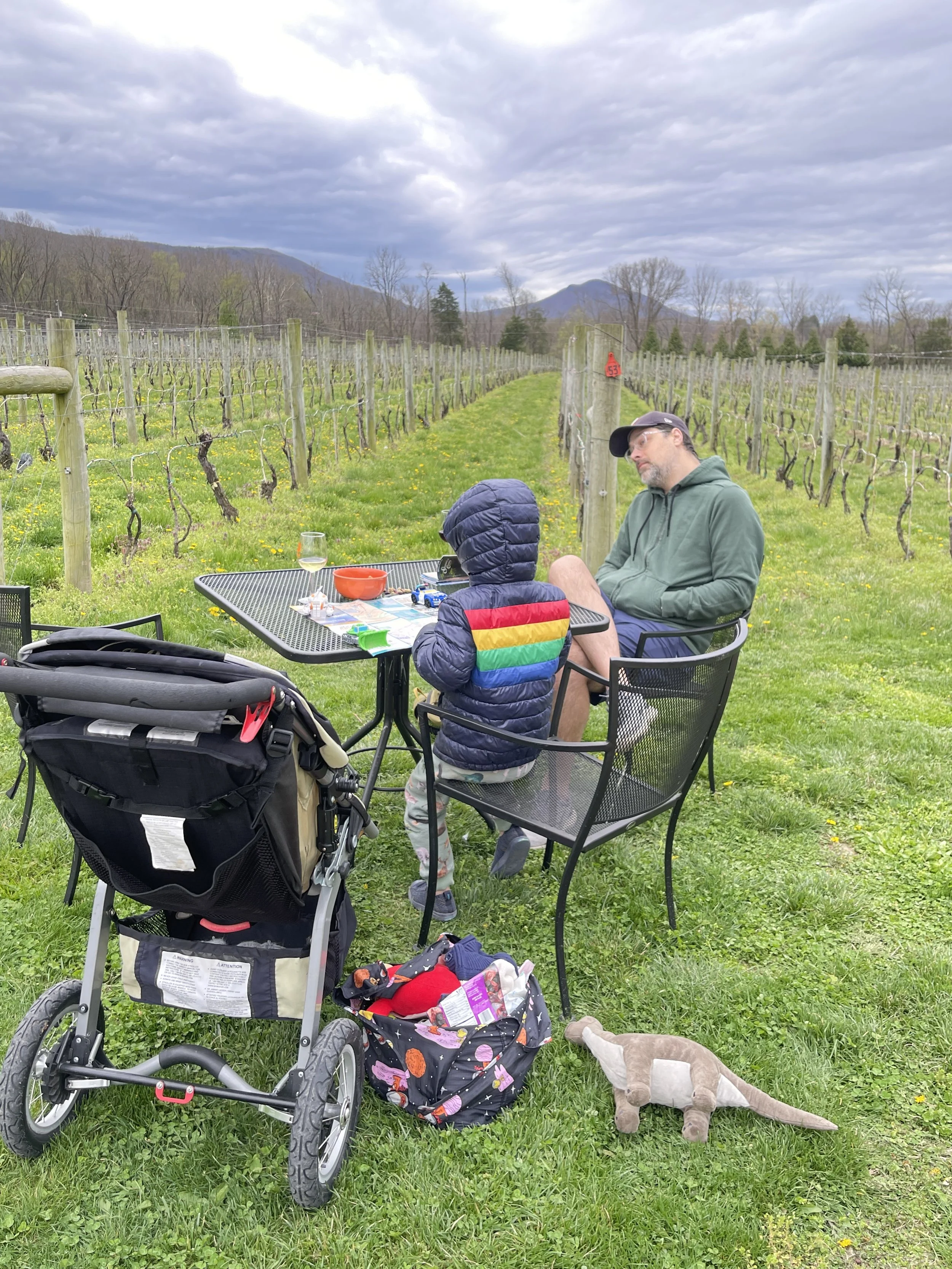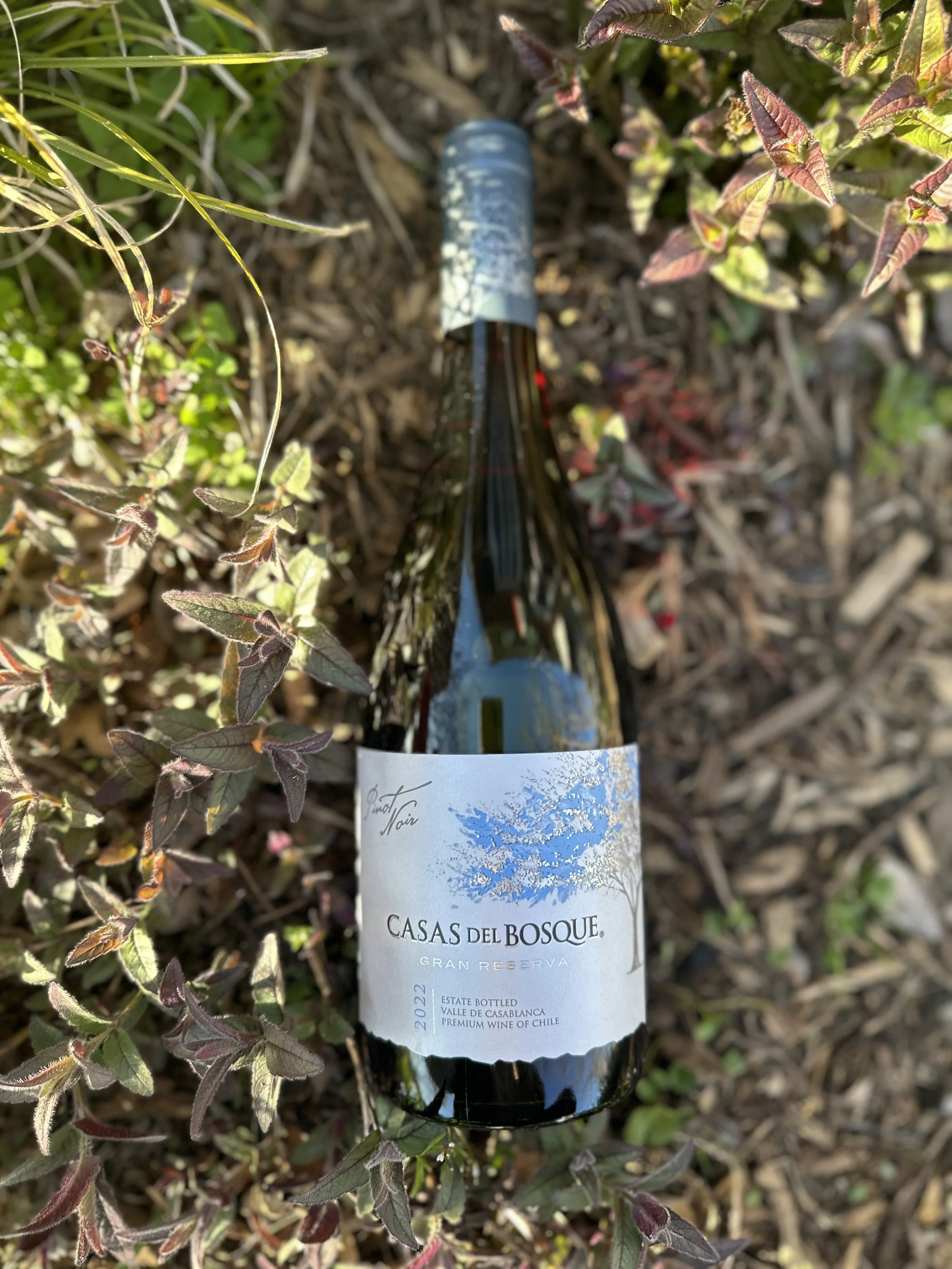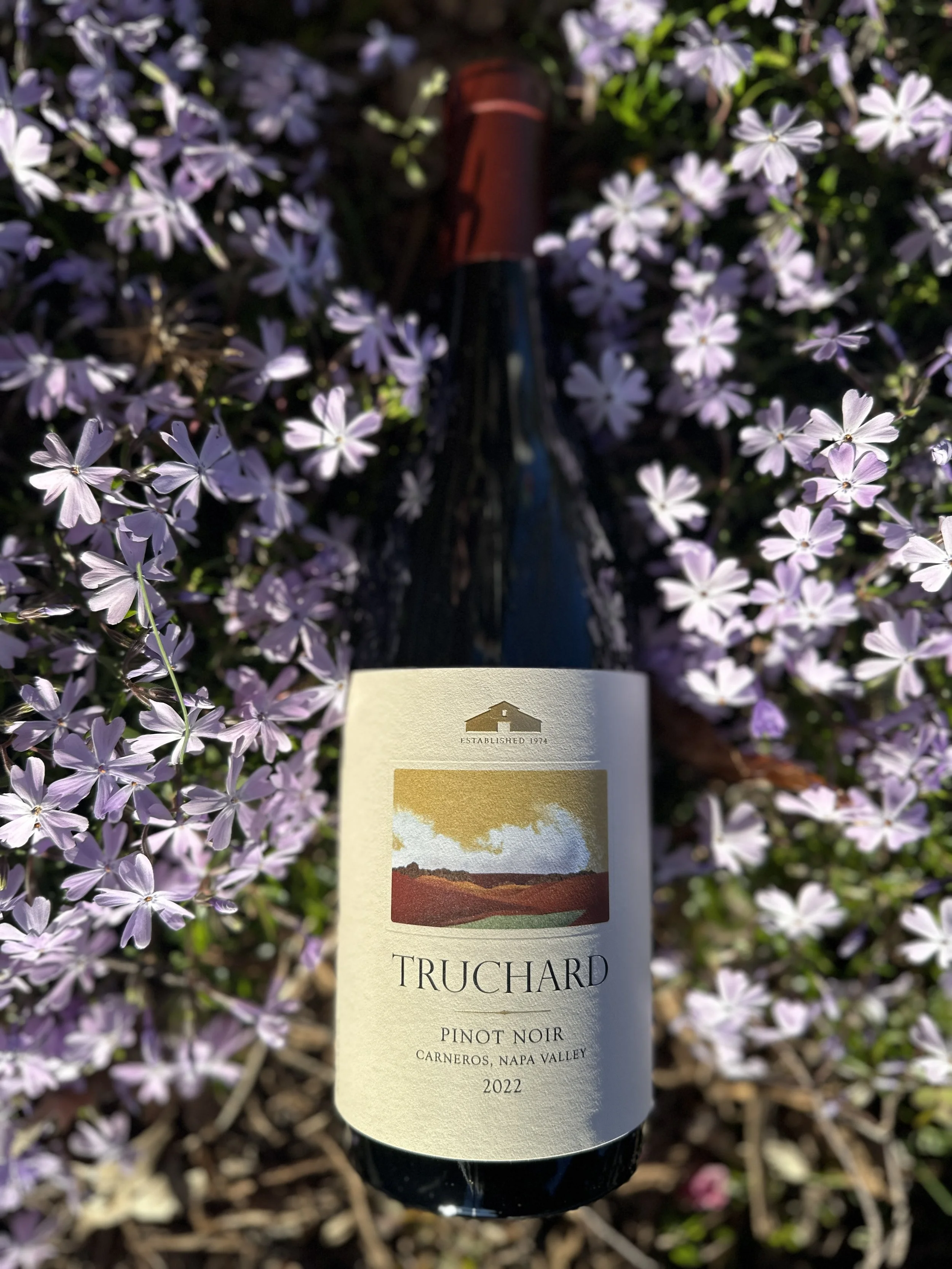April Wine Club: Pinot Futures
For us, vineyard visits are a family affair.
Welcome to April and our story about wines that are good for the planet—and the people who live here, too! We’re here to help you discover all the ways in which the wine industry is changing for the better—from grape to glass—and how you can be a part of it.
This month, we’re doing something a bit different to show you how important the climate is to wine and why it’s important to protect the planet so we can keep drinking the juice we love. We are such big Pinot fans (are you, too?), and it’s a great grape to learn how the differences in climate, soil, and topography of vineyards affect wine. Pinot is a finicky grape (queue up the movie Sideways right about now), and changes in climate have a major effect on the finished product. (For more on the changing climate and the effect on wine, check out this recent article in Nature.)
Pinot Noir prefers cooler or more moderate climates with lots of sunshine. Its thin skins and tightly clustered berries mean that it’s more prone to disease. The three Pinots we’ve picked this month—from Chile, New York, and California—benefit from factors that help to moderate the effect of temperatures on the grapes such as ocean or lake breezes and morning fogs.
To compare these wines side-by-side, we opened all three in an evening and tasted them, wondering to ourselves what the unique factors were at each site that led to the differences between them. If you want to do something similar, go for it, and the bottles should keep for a few days after opening if you put the cork back in. Another option is to open them on different days or weeks and just jot down some notes to jog your memory—or make your tasting a bit more systematic, and use this guide to help you. Cheers!
Do you have wines you’d like to see in the club? Wine recommendations you need on the fly? Shoot me a note! I’d be more than happy to chat. And for past months’ write-ups, just click here.
The Wines
Our first wine is a Pinot Noir from Chile from producer Casas del Bosque in the Casablanca Valley. I was surprised to find a Pinot Noir from Chile (and such a tasty one to boot!), because I assumed that the climate there is generally too warm for Pinot Noir. But in researching Casablanca Valley, I learned that the area has a 56 degree F average annual temperature. And in a really cool phenomenon, it also benefits from cooler Pacific breezes brought by the Humboldt Current, which brings cold water up the west coast of Chile from the Antarctic. Chardonnays and Pinots do well here given the cool climate that results. This Pinot is lush and fruit-forward with a bit of the flavor of baking spices from oak.
Chile itself is a pretty exciting wine-producing country, because it’s forward-leaning on the sustainability front and has an extensive, country-wide “Certified Sustainable Wine of Chile” program. Can’t wait to learn (and taste) more Chilean gems like this one!
— Casas del Bosque Gran Reserva Pinot Noir 2022
Next, we have a Pinot Noir from New York’s Finger Lakes American Viticultural Area (AVA). The Finger Lakes is super hot in a trendy sense, but not so hot in a temperature sense with an average annual temperature of 48.1 degrees F. Vitis Vinifera was not always common here and its use was pioneered in the area by a Ukrainian immigrant, Dr. Konstantin Frank, in the 1950s and 1960s. Grapes have to survive cold temperatures and snow to grow well here, and the lakes themselves really help with moderating the temperature year round. (A body of water to the rescue again!) This wine is all about crushed cranberry and savory flavors like thyme—notes that mark it as a cooler climate wine than our Chilean selection for sure.
— Ravines Pinot Noir 2020
Finally, we have a Pinot Noir from the Truchard winery, which is located in Carneros in California’s Napa Valley. Carneros is a cool region that has morning fog and cool afternoon winds that flow off of the San Pablo Bay. The Pinot sites in particular are planted on Eastern-facing slopes so as to be shielded from the heat of the afternoon sun (a heat that benefits the other varieties the Truchards grow!). The average growing season temperature here is 72 degrees F.
This wine is well-balanced and complex with just the right amount of fruit flavors in my book. I’m also happy to report that Truchard is a certified Napa Green project, which is a great sustainability program for Napa that focuses on people and planet in all that they do. Cheers!




